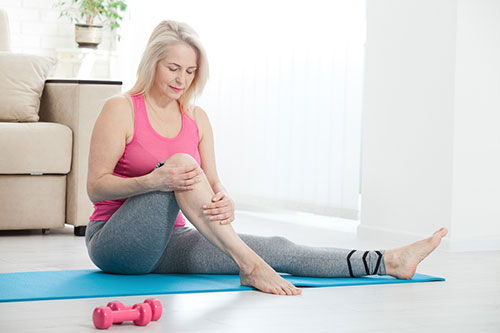
All too often, people assume that their joint pain is just a normal part of the aging process and there is nothing that can be done about it. The truth is there is an array of nonsurgical and surgical options that can be specifically tailored to treat your condition ranging from physical therapy to total joint replacement.
Total joint replacement is a major surgery and quite understandably patients would rather not undergo this procedure if there are alternative treatment options. Let’s look at some of the alternative treatments to joint replacement for patients suffering with chronic joint pain above the age of 50 years:
- Assistive devices: To reduce stress on injured joints, assistive devices such as braces, walkers, crutches, and canes can be used. Proper use of such devices may slow down degenerative joint disease and help delay or avoid the need for more invasive procedures.
- Pain medications: For mild joint pains, pain relievers such as aspirin, ibuprofen, and other non-steroidal anti-inflammatory drugs may be used. For more severe joint pain, your doctor may prescribe stronger pain medications. Whether prescription or over-the- counter medications, its best to take them only as recommended by your doctor.
- Physical therapy: A licensed physical therapist or an orthopedic physician (or a licensed physical therapist who is also an orthopedic physician like Dr. Paul Jacob!) may be able to advise you on specific exercises that can strengthen the muscles that surround and support your joints.
- Hot and cold therapy: Before exercise or activity, application of warm compresses prior to activity will improve mobility and reduce pain. Ice packs applied after exercise or sports will reduce inflammation and aid in recovery.
- Joint injections: The various injections that may relieve joint pain for several months include corticosteroid injections that inhibit inflammation and improve healing; and hyaluronic acid injections that work as lubricants and shock absorbers in the knee.
- Orthobiologics: These treatments harness the body’s natural healing capacity to cause regeneration of tissue. PRP injections derived from the patient’s own blood and stem cell injections derived from the patient’s bone marrow or fat belong to this category. They may be effective in treating long standing ligament and tendon injuries.
- Arthroscopy: This innovative surgical procedure involves making tiny key-hole incisions over the joint through which a tube-like instrument fitted with a miniaturized camera is inserted to identify and possible treat an underlying soft tissue or bone disorder. As this is a minimally invasive procedure, there is little or no damage to surrounding healthy tissue.
If your chronic joint pain is interfering with your quality of life and you would like to explore alternatives to joint replacement, book an appointment with Dr. Paul Jacob to discuss your options.
Dr. Jacob brings cutting edge techniques and technology to the Oklahoma City area. He has extensive training in minimally invasive, rapid recovery joint replacement as well as robotically assisted hip and knee replacement. Dr. Jacob is a pioneer in outpatient joint replacement allowing some patient to go home the same day as their procedure and recover in the comfort of their own home. The cornerstone of Dr. Jacob’s practice is to have the recovery process be easier, faster and less painful allowing his patients to get back into the game of life. Dr. Jacob is committed to bringing the highest level of orthopedic care while treating each and every patient like a family member. Providing you with patient centered care you can trust.













